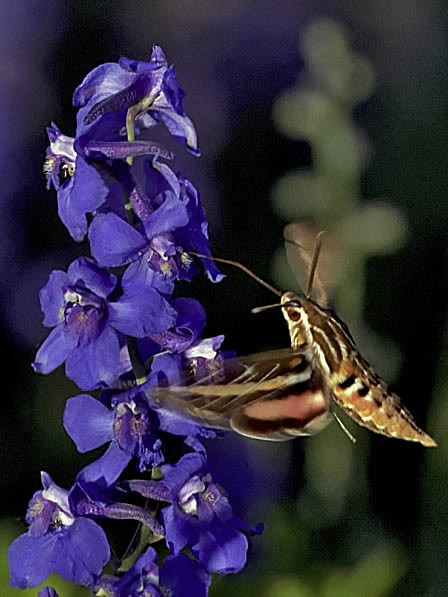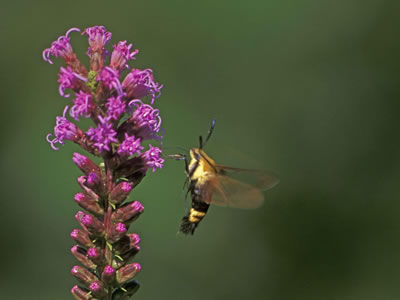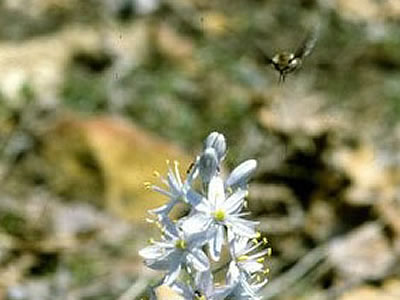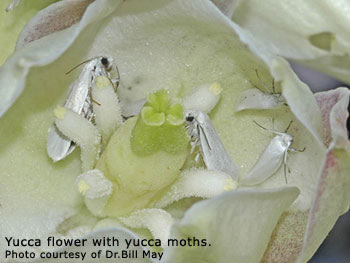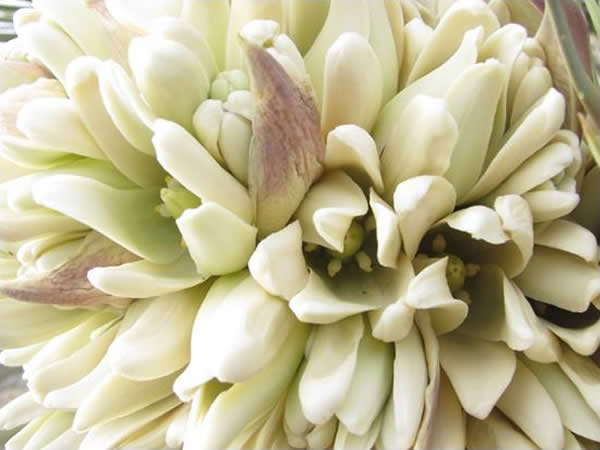Moth Pollination
After dark, moths and bats take over the night shift for pollination. Nocturnal flowers with pale or white flowers heavy with fragrance and copious dilute nectar, attract these pollinating insects. Not all moth pollinators are nocturnal; some moths are also active by day. Some moths hover above the flowers they visit while others land.
There are over 140,000 species of butterflies and moths worldwide. To see the differences between moths and butterflies visit the Butterfly Basics on The Field Museum's website.
Hawkmoths are impressive flyers and some have tongues longer than their bodies. These giant moths fly upwind, tracking the airborne fragrance trail to a clump of flowers. Their caterpillars, tobacco and tomato hornworms, are well known to gardeners as voracious feeders. If you want to see their colorful adults, sequester these offspring on a few plants in the corner of your garden.
Moth Flowers
The flowers that are visited by moths are typically:
- In clusters and provide landing platforms
- White or dull colors
- Open late afternoon or night
- Ample nectar producers, with nectar deeply hidden, such as morning glory, tobacco, yucca, and gardenia.
Yucca Moths
The yucca plant is dependent upon the yucca moth for its survival and perpetuation of yucca plants. The pistil (female part) of each flower ends in a three-lobed stigma. In order for pollination to occur, masses of pollen must be forced down into this central stigmatic hole.
The female yucca moth gathers pollen from the flower anthers by using her specially adapted mouthparts. She forms the sticky pollen into a ball. The pollen ball is then "stuffed" or "combed" into the stigma of the various flowers she visits. Without this process, the yucca flower will not develop into the fruit or pod with seeds.
When the female moth visits the flower, she backs up to the flower base and inserts her ovipositor to lay an egg in one or more of the six chambers. The chamber protects the egg while it develops. By the time the egg hatches into a microscopic caterpillar, the yucca will have begun to develop a pod with little seeds. The yucca and the yucca moth both benefit in the relationship.
Success Story: Spring Mountains National Recreation Area Collects Over 400 Pounds of Joshua Tree Seed Pods For Restoration
On July 1, 2013, a lightning strike ignited the Carpenter 1 Fire that burned over 27,800 acres on the Spring Mountains National Recreation Area (SMNRA), located northwest of Las Vegas on the Toiyabe National Forest. A portion of the burn occurred throughout Joshua trees, which recover slowly following fire.
The SMNRA took advantage of the successful Joshua tree and yucca moth mutualistic relationship and collected large quantities of seedpods from the massive spring bloom for restoration. A seed-planting event within the Carpenter 1 Fire burn area occurred on National Public Lands Day, September 28, 2013.
Read more about collecting Joshua tree seed pods for restoration…


